By Kent E. Fillinger
Discipleship is a hot topic in church ministries and global missions today. Churches are placing a greater emphasis on disciple-making. And missionaries are more focused on trying to establish disciple-making movements around the world. As I prepared to write this article, I received an evite to attend a webinar about “discipling people online” in response to the COVID-19 lockdown.
In our annual survey, we asked a series of questions about disciple-making processes in churches, and we also asked leaders to evaluate the effectiveness of their efforts.
Would you describe your church today as a “disciple-making church”?
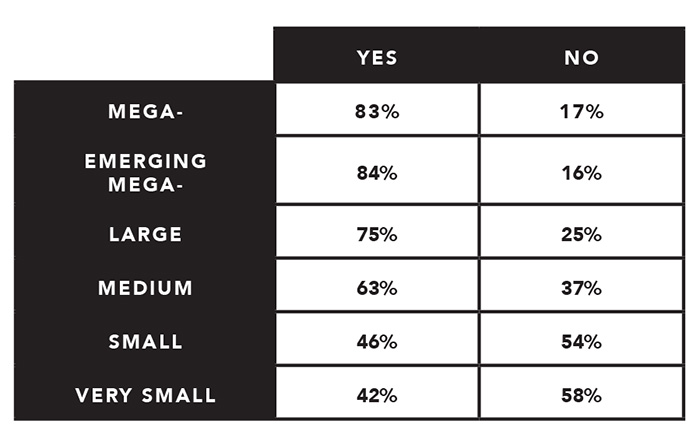
Overall, two-thirds (66 percent) of the churches surveyed said they would describe themselves as a “disciple-making church.” The largest churches were about twice as likely to classify themselves as such than the smallest churches.
What impact did being a “disciple-making church” have on church growth rates and baptism ratios?
Churches that said they were a disciple-making church had significantly better growth rates and baptism ratios (the number of people baptized per 100 in attendance) than churches that didn’t identify themselves that way in 2019.
Statistics validated this conclusion in all but the large size category of churches (see the chart below). The large churches were the only category where disciple-making churches didn’t see overall growth last year.
The churches that were not disciple-making churches declined on average 2 percent in 2019 compared to an overall average growth rate of 4 percent for the disciple-making churches.
With respect to baptism ratios, the gap was not as significant. But overall, the churches self-identifying as a disciple-making church had a higher baptism ratio in four of six church size categories.
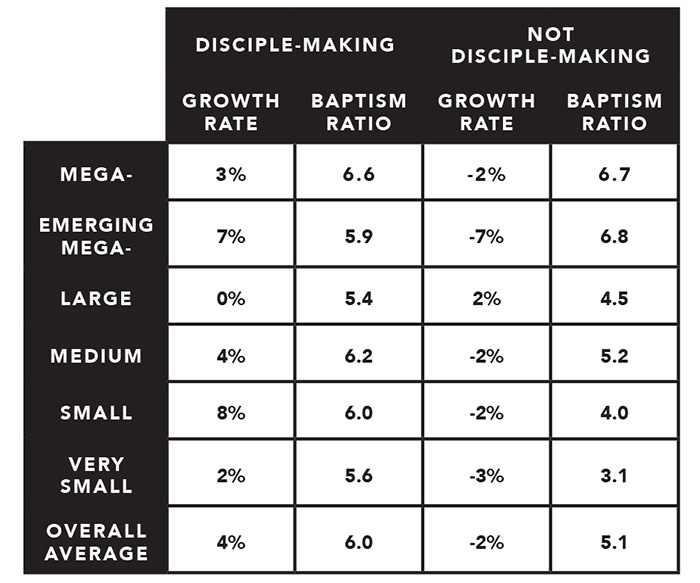
The Great Commission gave marching orders for all Christians and churches to “go and make disciples of all nations” and to teach these new disciples to obey everything Jesus has commanded them (Matthew 28:18-20). That said, the priority placed on discipleship by the surveyed churches was mixed.
Less than half of the churches (48 percent) said that disciples making disciples was a “high priority” for their church. Overall, 12 percent of the churches surveyed said “disciples making disciples” was a “low priority” for them.
What level of priority does your church currently place on disciples making disciples?
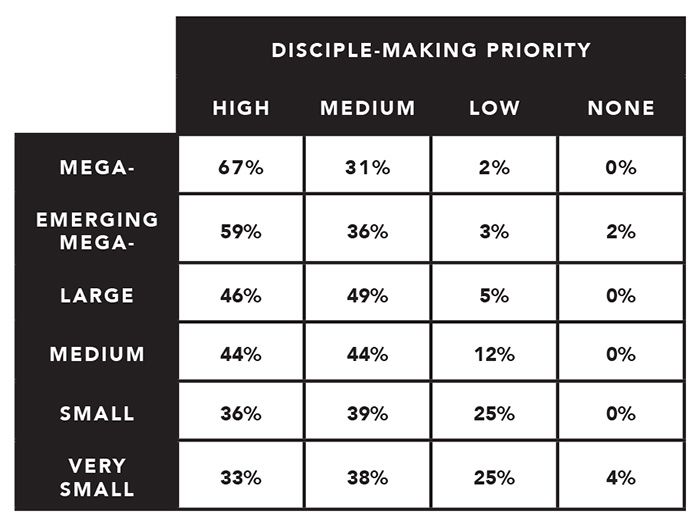
A 2019 LifeWay research study found that 65 percent of Protestant pastors said they were satisfied with the state of discipleship and spiritual formation in their local church, while 78 percent indicated there was room for improvement.
While nearly two-thirds of the pastors in the LifeWay survey were satisfied with their church’s discipleship efforts, 44 percent said they did not regularly evaluate their discipleship progress to inform that opinion. About 8 out of 10 (83 percent) of these churches said they had an intentional plan for discipleship.
By comparison, 77 percent of the churches in our Christian Standard survey rated their church’s disciple-making efforts as either “somewhat effective” or “very effective.” Again, the larger the churches, the more likely they were to rate their disciple-making efforts as effective.
How would you rate the effectiveness of your church’s disciple-making efforts?

Does your church currently offer any disciple-making and/or evangelism training programs?
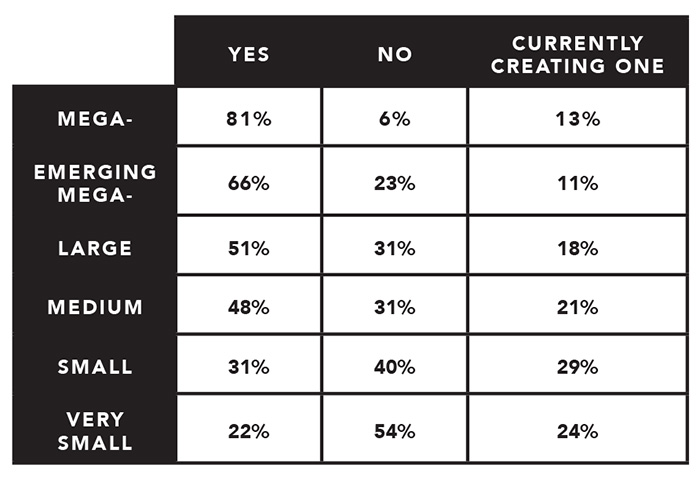
Again, larger churches were more likely to offer disciple-making or evangelism training than smaller churches. However, the net positive effect of offering some type of disciple-making training program wasn’t always reflected in those church’s growth rates and baptism ratios.
Overall, the churches that had no discipleship or evangelism training program had slightly better growth rates last year (2.7 percent) than churches that did offer such a program (2.4 percent) or which were in the process of creating one (0.8 percent).
But churches with a disciple-making training program had the highest baptism ratios of these three groups of churches. The churches with such a program baptized 6.2 people per 100 in attendance compared to 5.3 for both the churches with no training program and those working to develop one.
Among these three possibilities, what is the primary method for adult discipleship in your church?
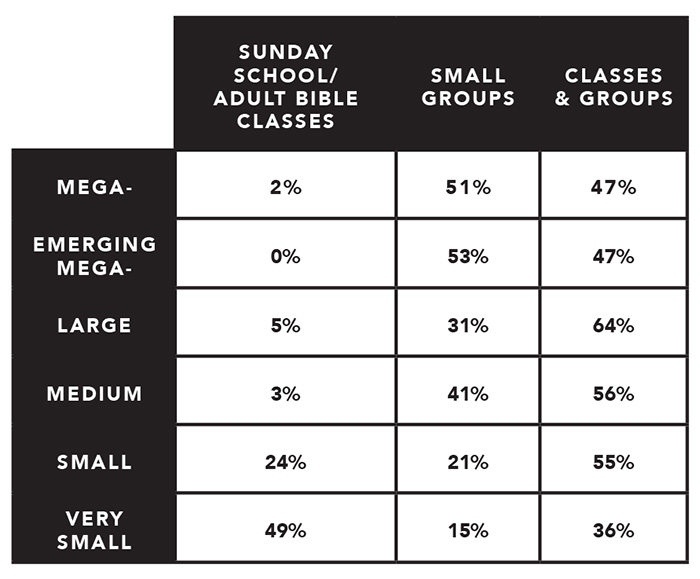
Based on my past research, I’ve discerned that a church’s primary method of adult discipleship hinges somewhat on its size. Churches larger than 250 seldom offer only adult classes (i.e., Sunday school or adult Bible fellowship classes). Just over half of the churches surveyed (51 percent) used a combination of adult classes and small group Bible studies to help mature their members. Overall, 35 percent of the churches surveyed used only small group Bible studies. The larger the church, the more likely they were to use small group Bible studies as the primary method for discipleship.
How effective is your church’s current process for maturing believers?

Larger churches were more likely than smaller churches to rate their efforts to mature believers as either “very effective” or “somewhat effective.”
Looking at the various methods of adult discipleship, and adding together the percentage of churches that ranked these methods as either very effective or somewhat effective, we found the churches that offered a combination of adult classes and small group Bible studies reported a combined level of effectiveness of 84 percent; while churches that offered only small groups were next, 81 percent; and churches that had only adult classes were third, with 62 percent reporting a certain level of effectiveness.
Kent E. Fillinger serves as president of 3:STRANDS Consulting, Indianapolis, Indiana, and regional vice president (Ohio, Pennsylvania, Michigan) with Christian Financial Resources.


0 Comments